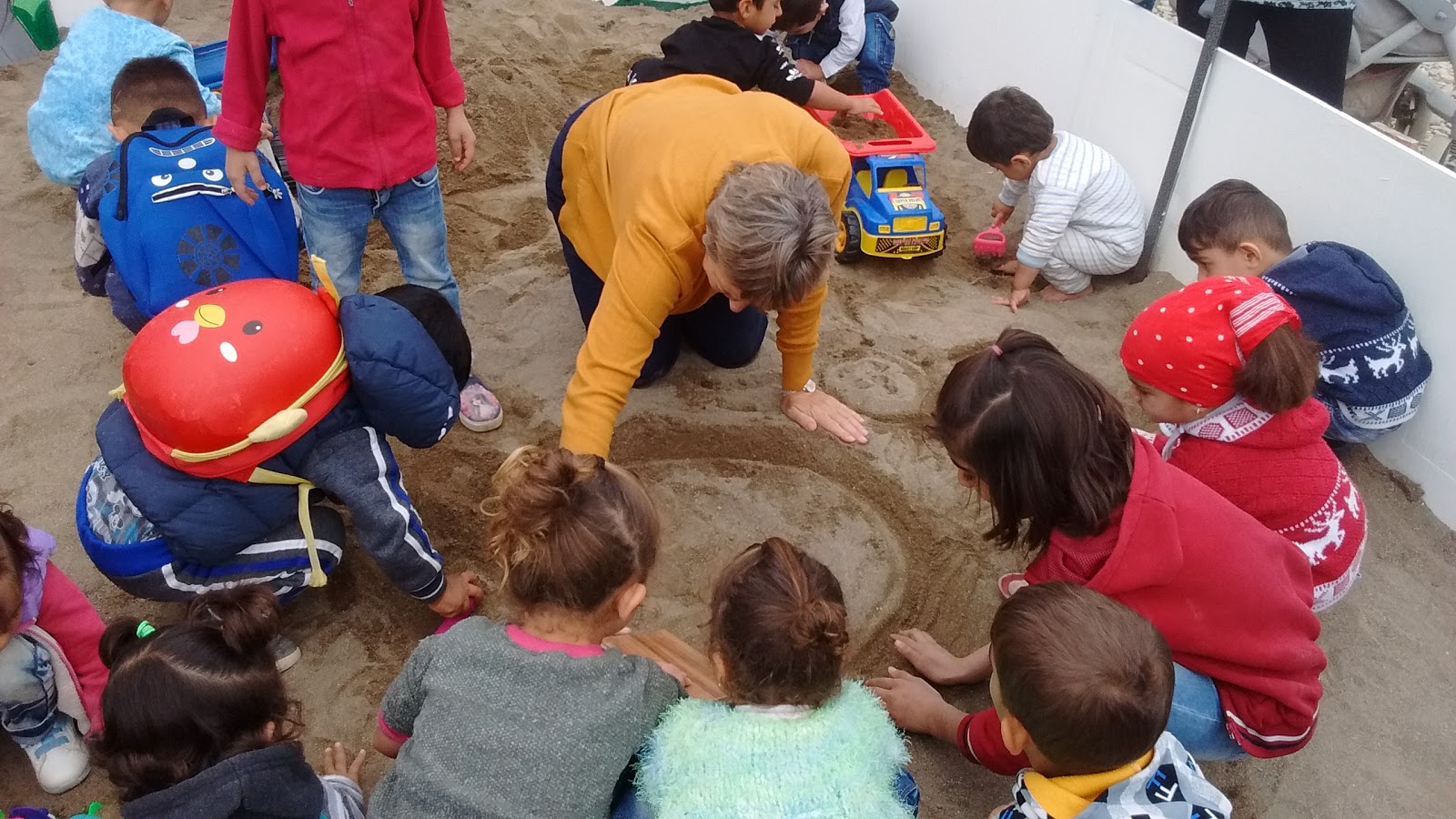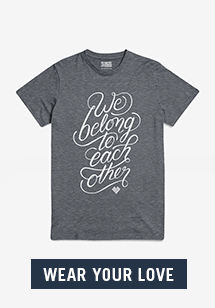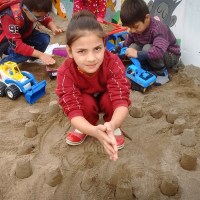It feels like an achievement to successfully navigate the narrow alleys of the Syrian refugee camp. A trophy-worthy achievement. Between potholes, deep drainage ditches, piles of random building materials, and parked vehicles, the alleys are more obstacle course than thoroughfare. Add in children playing in the streets–so many small children–the stakes grow higher.
Yesterday we drove by a toddler that you just know keeps his mama’s hands full. He stood in the street next to a pile of material being used to make concrete, poured gravel into his hair and down his back with two hands, the grin on his face telling us clearly he was getting away with something absolutely glorious. He was having fun! But the narrow gap between our car, the curb, and piles of gravel was not the safest place to play.
For a long time, young children in the camp didn’t have other options for a safe place to play. You are making it possible for kids to get out of the street, and into the sandbox.

“They’re different.” That’s what parents keep saying about their little ones who are spending time at the Little Friendly Center in the Syrian refugee camp.
“How different?” the staff ask. The children are talking more, they say. They’re saying numbers and colors at home. The children are excited about coming to school. And they’re happy. Happy!
In October we began a partnership with the Friendly Center, an essential service providing educational, therapeutic play for children inside the same Syrian refugee camp we’ve been working for years, providing small business grants and coaching. The Friendly Center is a safe space for kids that helps meet their essential needs, including one of the most critical needs—addressing childhood trauma. The center offers a respite for children and youth—a place for them to be innocent, to play and learn, to heal.
In times of trauma, basic skills can be missed, and the long-term impacts only realized decades later.
Tucked into the back of the refugee camp, away from the main roads, the space consists of two areas: one for youth and another, the Little Friendly Center, for smaller kids. When funding for the Friendly Center ran out earlier this year, the Little Friendly Center was closed. We couldn’t see that happen.
Together we stepped in to reopen the program for young children, to provide the kind of enriched play and learning that help heal displaced children who experienced war.
The response, from parents, staff, and the children themselves, has been overwhelming.

Teachers are thrilled to work with the children, teaching and playing through a wide range of activities. And they are excited to explain to parents why they play the way they play, so parents–children’s first teachers–can learn how to engage their children in healthy ways at home.
- Social skills: learning to share, take turns, watch and learn from each other, help each other, take the lead and learn to follow, being kind, following a daily routine, and dealing with disappointment when their sand castle falls down!
- Language skills: language and vocabulary taught through praise and encouragement. The alphabet in Arabic and English is learned through play, songs, and trips to the camp library. Few homes in the camp contain a single children’s book, so the library and early literacy lessons prepare them for future success.
- Physical development: children need opportunities to build up muscles! Working in the sand in the new sandbox allow children to develop balance and coordination through kneeling, reaching, lifting, as well as pouring, scooping, and molding the sand.
The learning opportunities are endless.

Normal kids’ play? Not exactly. In a refugee camp populated with thousands of families who experienced the traumas of war, displacement, and starting life in a new country where so much is different—it takes time and focused intention to provide a safe, caring environment for children to have fun and learn. And to provide a space that is also welcoming to their parents. In times of trauma, basic skills can be missed, and the long-term impacts only realized decades later.
On the Saturday in October that the Little Friendly Center reopened, 150 children registered on that first day alone. From that day until the end of November, nearly 3500 visits were made to the Little Friendly Center! Most days, between 130-150 children come to play and learn at some point during the day.
The need for a safe space inside the camp is real. But since reopening, the center for young children quickly reached capacity. There are children who would love to spend time at the center, but can’t because the sessions are full.
You can keep the Little Friendly Center welcoming young camp residents into the new year. You can provide additional teachers and extra class time to meet the emotional, social and physical needs of Syrian children who have never seen their homeland.


